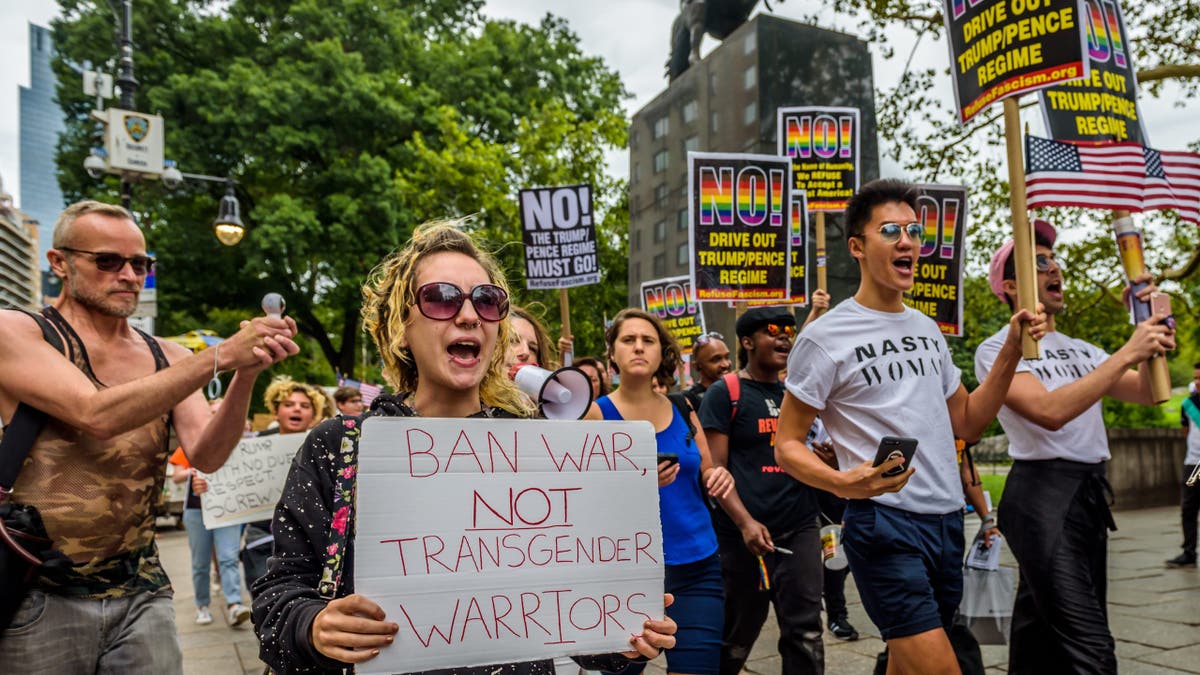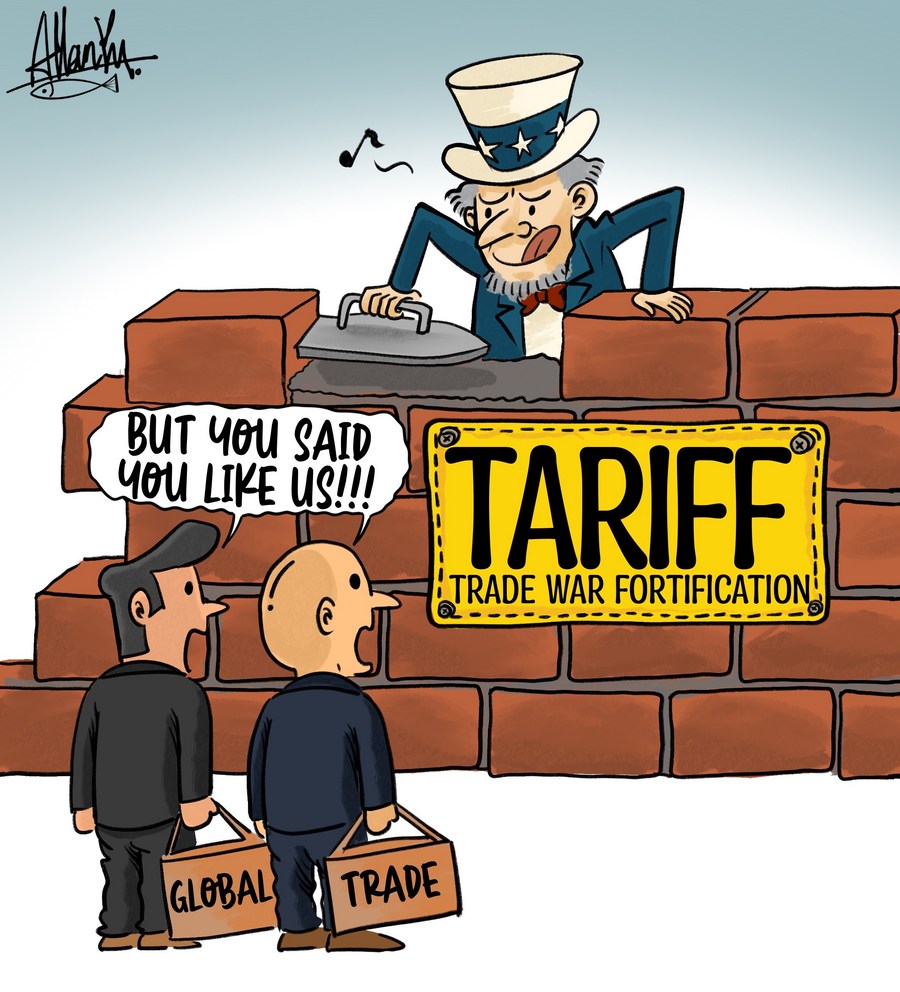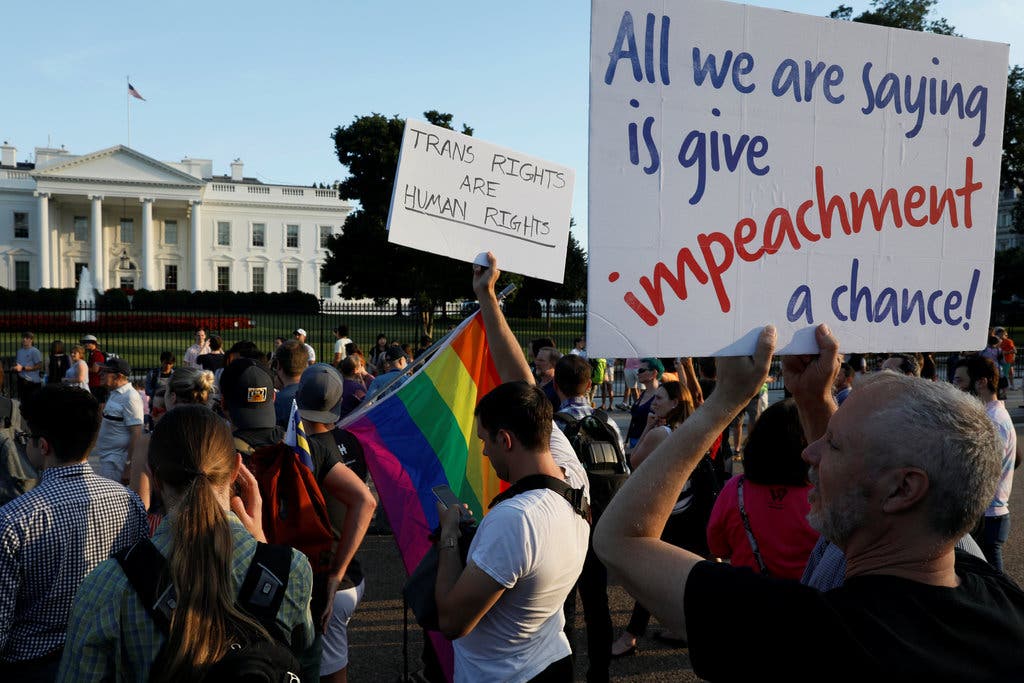Trump's Transgender Military Ban: An Analysis Of The Arguments

Table of Contents
National Security Arguments for the Ban
Proponents of the Trump transgender military ban primarily framed their arguments around national security and military readiness. Their core concerns centered on several key points:
-
Military Readiness and Combat Effectiveness: Arguments focused on the belief that allowing transgender individuals to serve would compromise military readiness and combat effectiveness. This assertion often lacked concrete evidence and relied on broad generalizations about the physical and psychological demands of military service.
-
Healthcare Costs: A significant portion of the justification for the ban revolved around the projected increase in healthcare costs associated with the medical transitions of transgender service members. Proponents argued this would strain the military budget and divert resources from other essential areas. However, studies have shown that the actual healthcare costs associated with transgender service members are often relatively low compared to the overall military healthcare budget.
-
Unit Cohesion and Operational Effectiveness: Concerns were raised about the potential disruption to unit cohesion and operational effectiveness caused by the inclusion of transgender individuals. Opponents of this argument countered that diversity and inclusion initiatives often strengthen unit cohesion and improve morale. The lack of empirical evidence supporting this claim further weakened the argument.
-
Physical and Psychological Demands: The physical and psychological demands of military service, particularly in combat roles, were highlighted as reasons to exclude transgender individuals. This argument often overlooked the fact that many transgender individuals already serve successfully in the military, demonstrating their ability to meet the rigorous demands of service.
Arguments Against the Ban: Focusing on Equality and Human Rights
Opponents of the Trump transgender military ban vehemently argued that it was discriminatory and violated fundamental principles of equality and human rights. Their arguments centered on:
-
Discrimination and Equal Opportunity: The ban was widely condemned as discriminatory, violating the principle of equal opportunity enshrined in U.S. law and military values. This argument emphasized that transgender individuals, like all citizens, deserve the right to serve their country without facing unfair prejudice.
-
Stigmatization and Undermining Service Commitment: Critics argued that the ban stigmatized transgender individuals, undermining their service commitment and sending a negative message to potential recruits from the LGBTQ+ community. This, in turn, could negatively impact military recruitment efforts and morale.
-
Constitutional Rights Violations: Legal challenges to the ban argued that it violated constitutional rights, including the Equal Protection Clause of the Fourteenth Amendment. These legal arguments successfully challenged the ban's justification and contributed to its eventual reversal.
-
Impact on Morale and Recruitment: The ban was also criticized for its negative impact on military morale and recruitment. The exclusion of a group of qualified individuals damaged the military's image as an institution committed to diversity and inclusion.
The Economic and Logistical Impact of the Ban
The Trump transgender military ban had significant economic and logistical implications, extending beyond the immediate concerns about healthcare costs:
-
Increased Healthcare Costs (Indirect): Ironically, the ban may have inadvertently increased healthcare costs. By excluding transgender individuals from military service, the military may have shifted costs to the civilian healthcare system, potentially resulting in a greater financial burden on taxpayers.
-
Recruitment and Retention Challenges: The ban created challenges in recruitment and retention, not just for transgender individuals, but also for potential recruits who valued diversity and inclusion. This could have long-term implications for the military's ability to attract and retain top talent.
-
Administrative Burden and Logistical Challenges: Enforcing the ban itself created significant administrative and logistical burdens, requiring additional resources to screen and manage personnel based on their gender identity. This added unnecessary complexity to military operations.
The Legal Challenges and Subsequent Reversals
The Trump transgender military ban faced numerous legal challenges from various organizations and individuals. These legal battles played a crucial role in shaping the eventual outcome:
-
Numerous Lawsuits: Numerous lawsuits were filed against the ban at both the district and appellate court levels.
-
Key Court Rulings: Several courts ruled against the ban, finding that it violated the constitutional rights of transgender service members.
-
Supreme Court Involvement: While the Supreme Court did not directly address the core constitutional issues, its rulings on related cases influenced the lower courts’ decisions, paving the way for the ban's reversal.
-
Reversals and Current Status: The ban was ultimately reversed, allowing transgender individuals to serve openly in the military. The current policy reflects a commitment to inclusivity and equal opportunity within the armed forces.
Conclusion
The Trump administration's transgender military ban ignited a complex and multifaceted debate, encompassing issues of national security, human rights, and the legal system. While proponents emphasized concerns about military readiness and cost, opponents effectively highlighted the discriminatory nature of the ban and its infringement on fundamental rights. The ensuing legal challenges, and their eventual success, underscored the importance of judicial review in protecting the rights of marginalized groups. Understanding the intricacies of the Trump transgender military ban requires a thorough analysis of all perspectives, and further research and critical discussion are vital to fostering a more inclusive and equitable future for transgender individuals within the military. Continue to learn more about the ongoing impact of the transgender military ban and its broader implications for military policy and LGBTQ+ rights.

Featured Posts
-
 Fox News Hosts Clash Over Trumps Tariffs A Heated Exchange
May 10, 2025
Fox News Hosts Clash Over Trumps Tariffs A Heated Exchange
May 10, 2025 -
 First Listen Mariah The Scientists Burning Blue
May 10, 2025
First Listen Mariah The Scientists Burning Blue
May 10, 2025 -
 Private Credit Jobs 5 Essential Dos And Don Ts
May 10, 2025
Private Credit Jobs 5 Essential Dos And Don Ts
May 10, 2025 -
 Trumps Transgender Military Ban Decoding The Double Speak
May 10, 2025
Trumps Transgender Military Ban Decoding The Double Speak
May 10, 2025 -
 6 3 Defeat In Vegas Red Wings Playoff Dream Fades
May 10, 2025
6 3 Defeat In Vegas Red Wings Playoff Dream Fades
May 10, 2025
